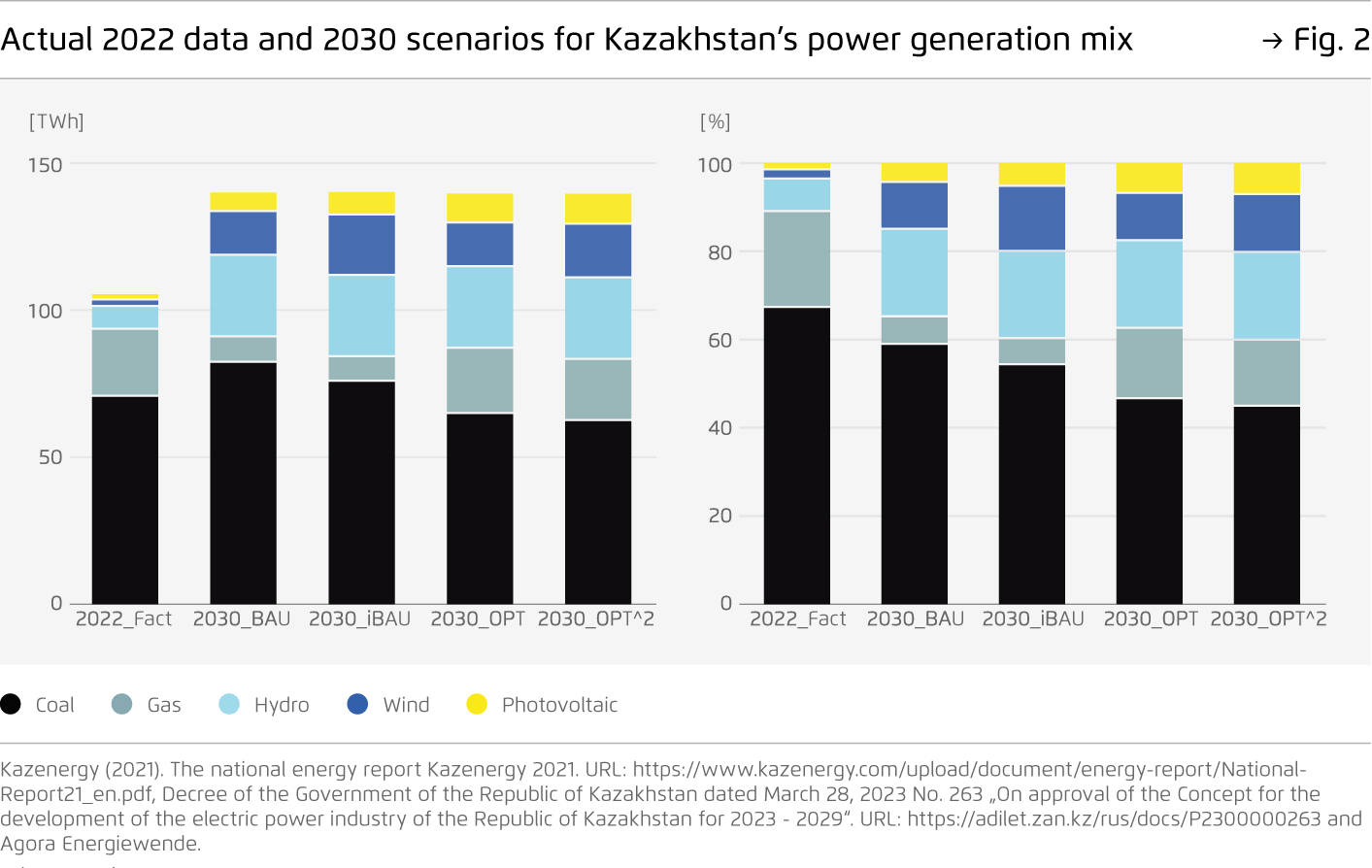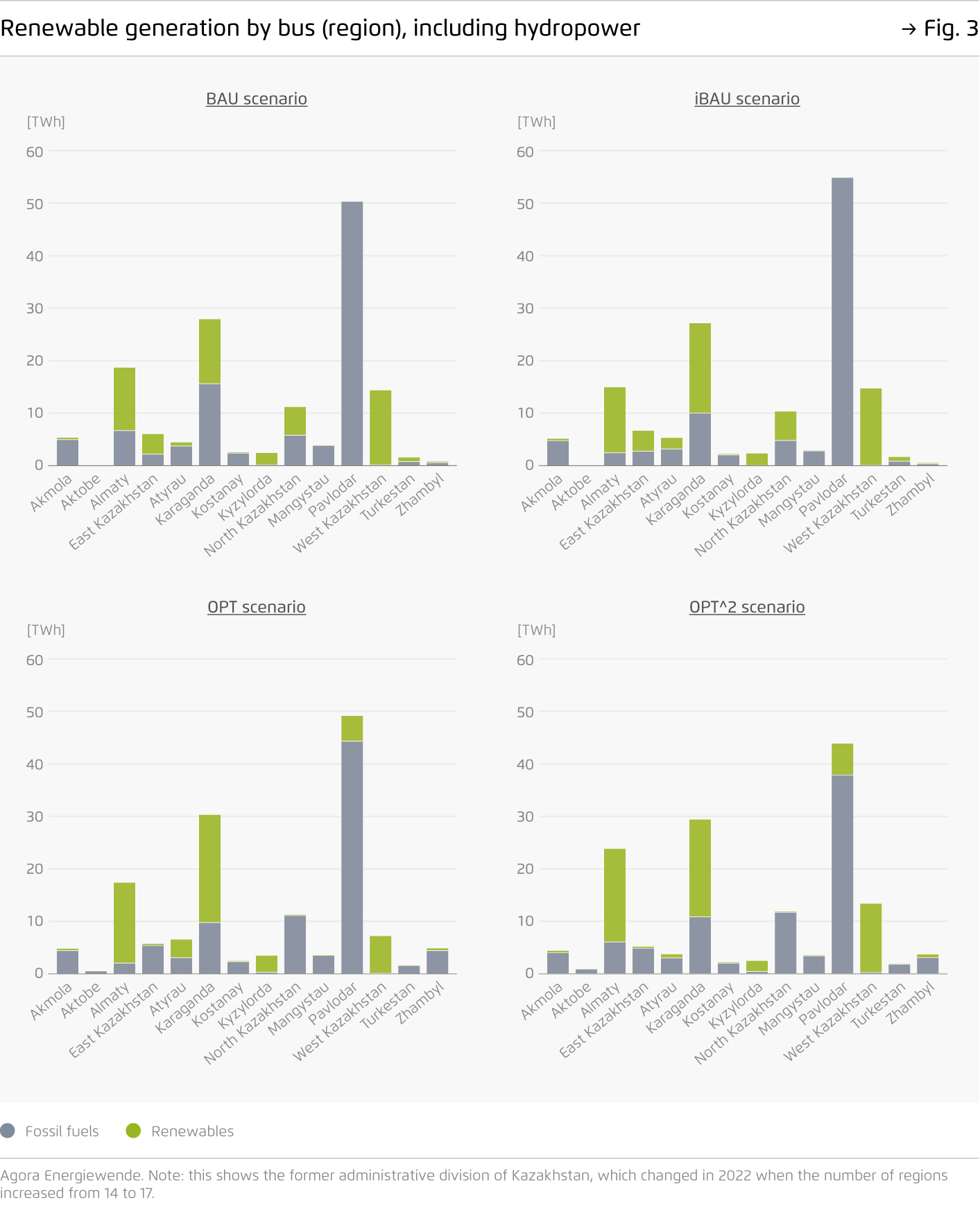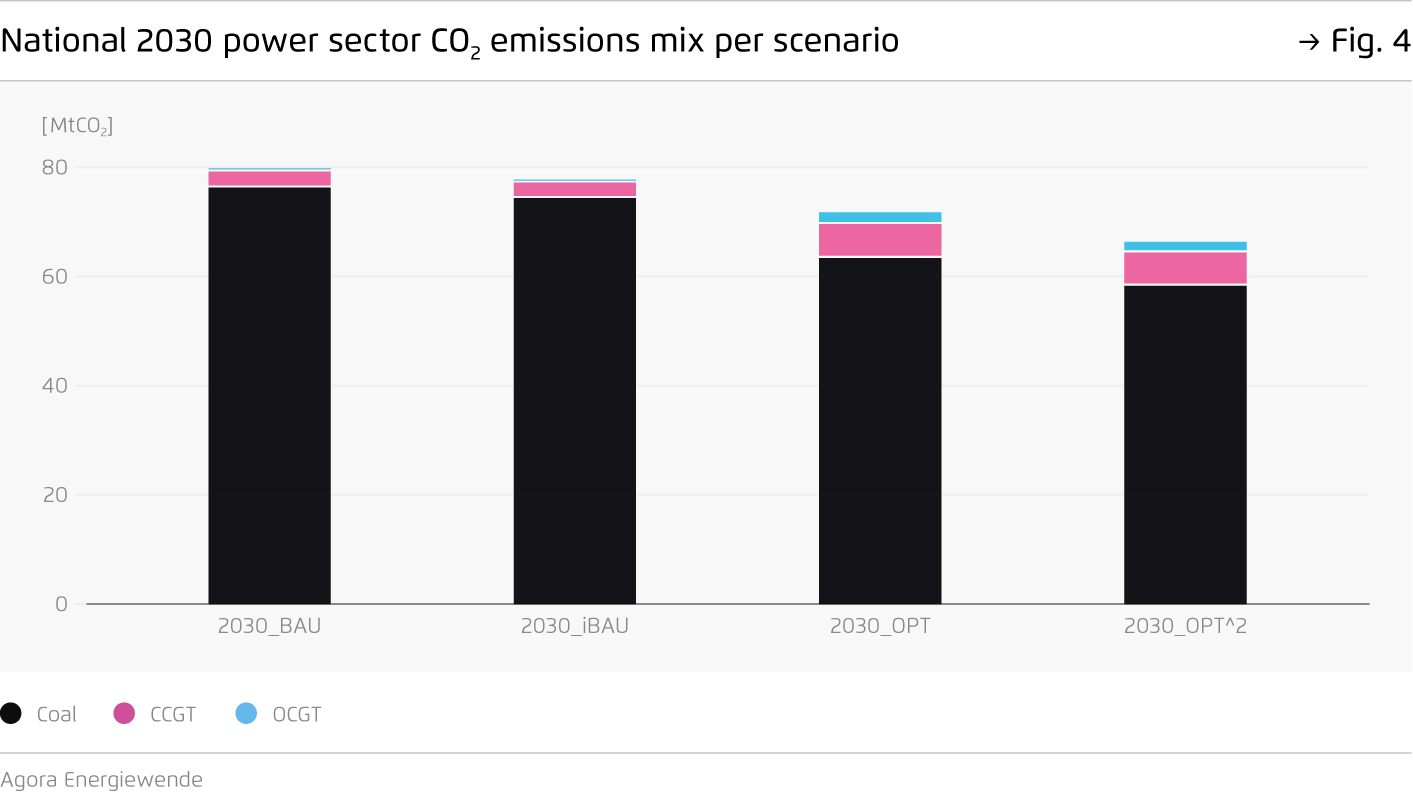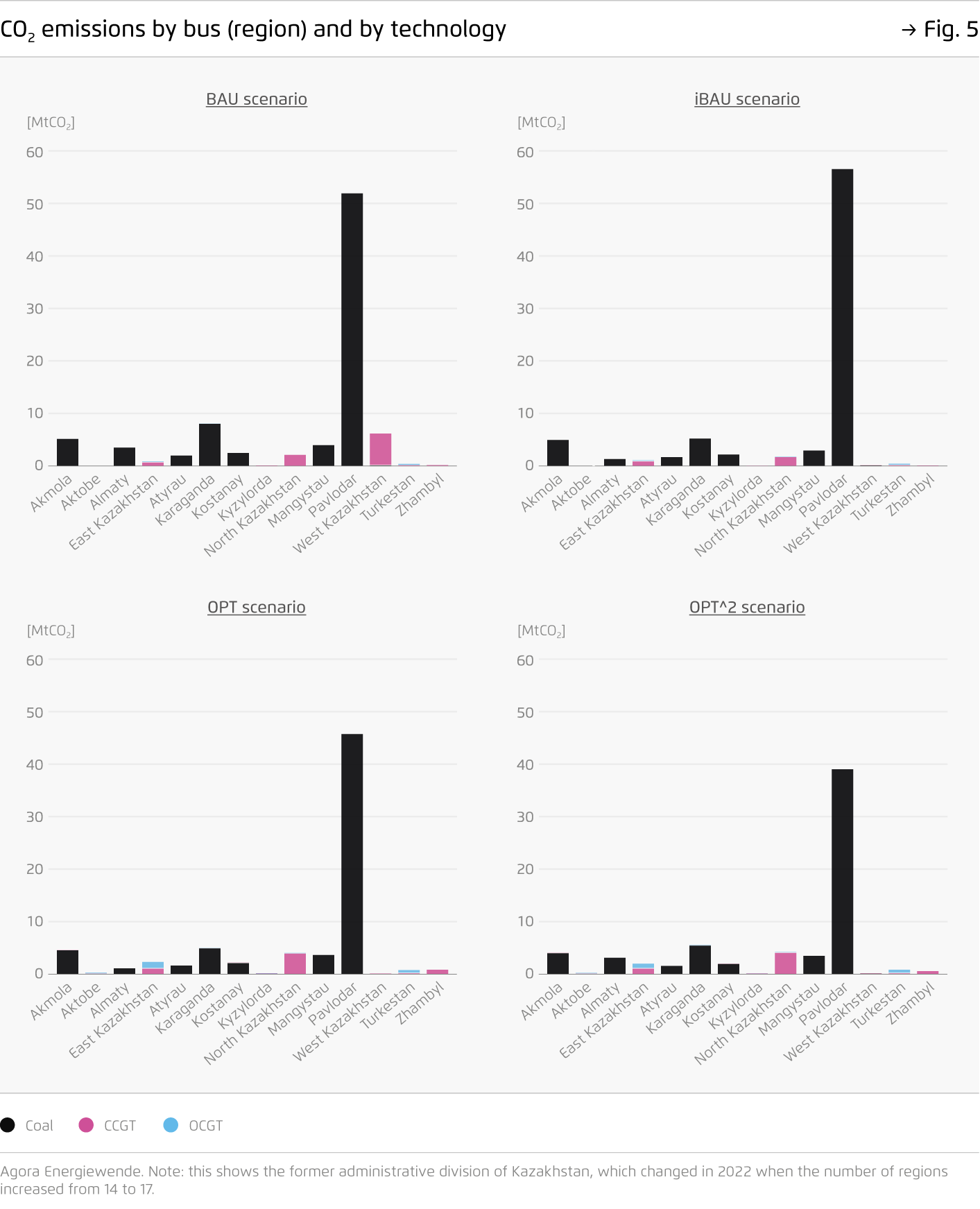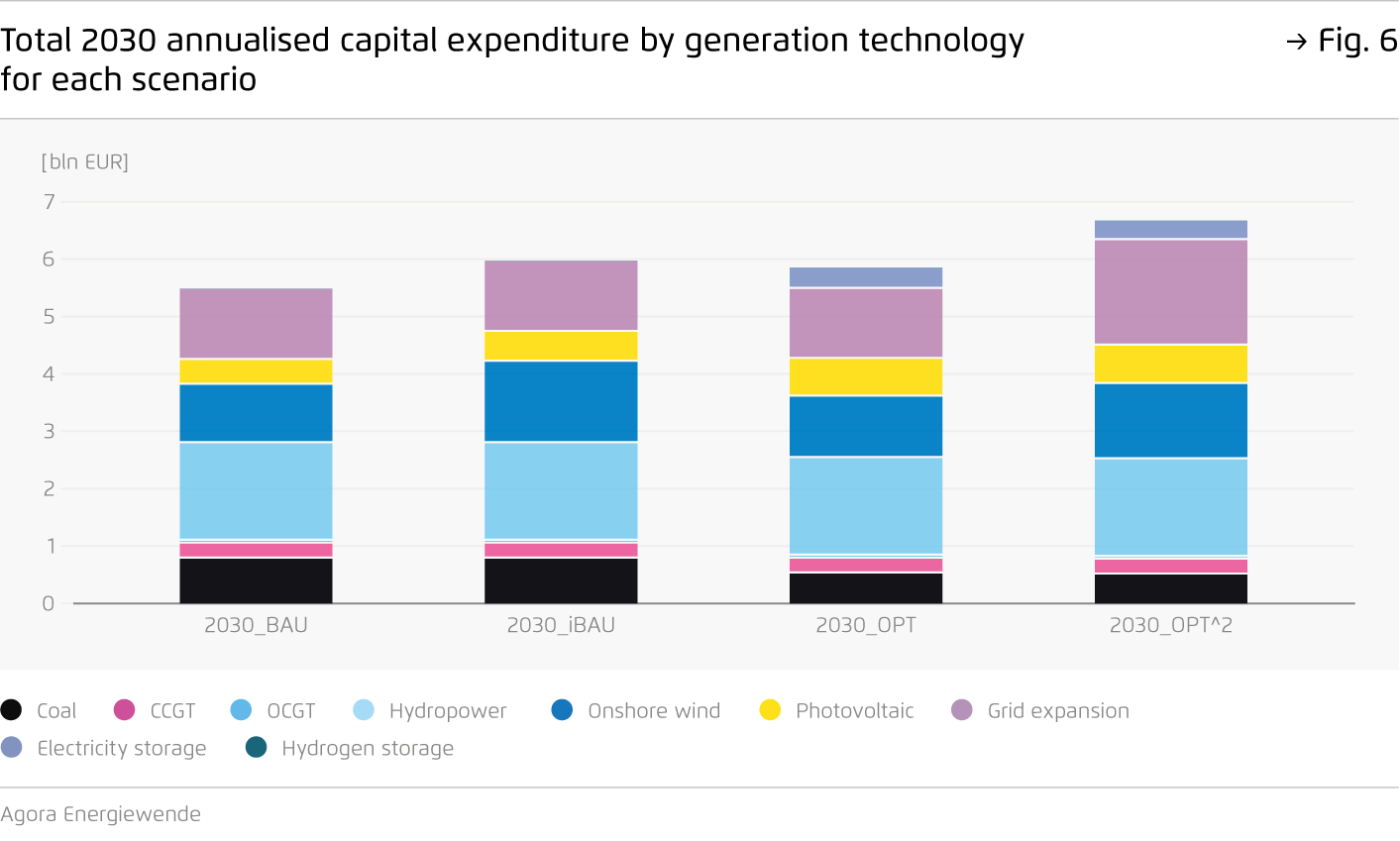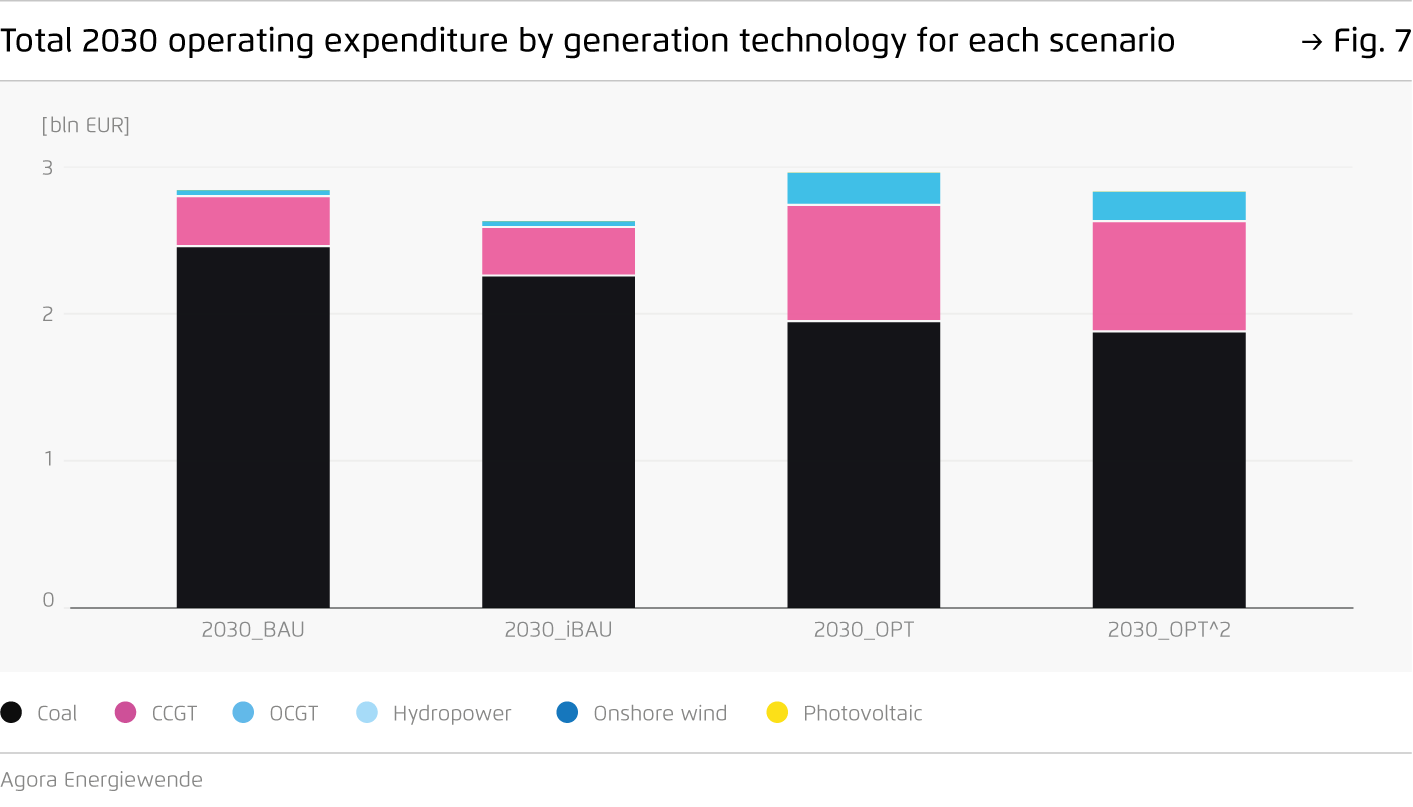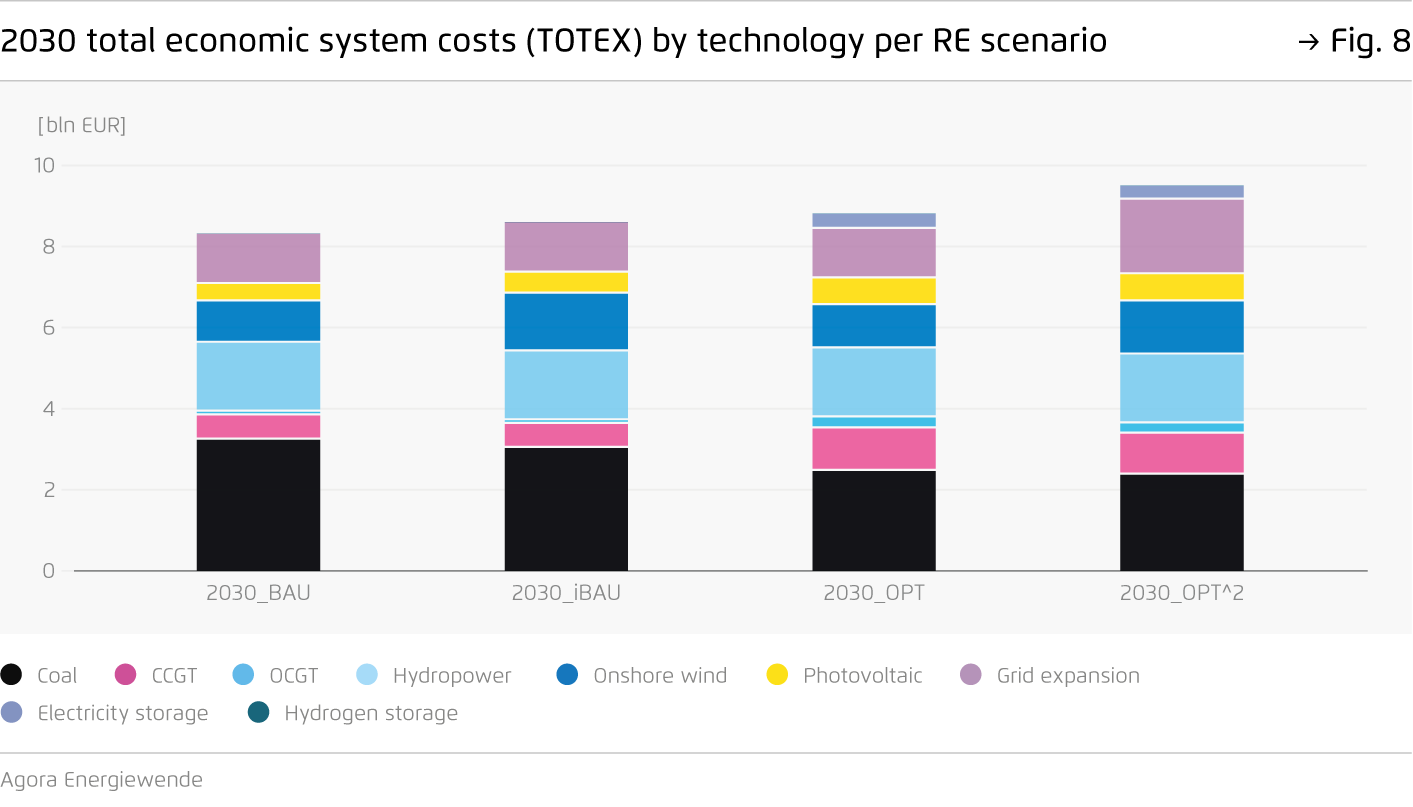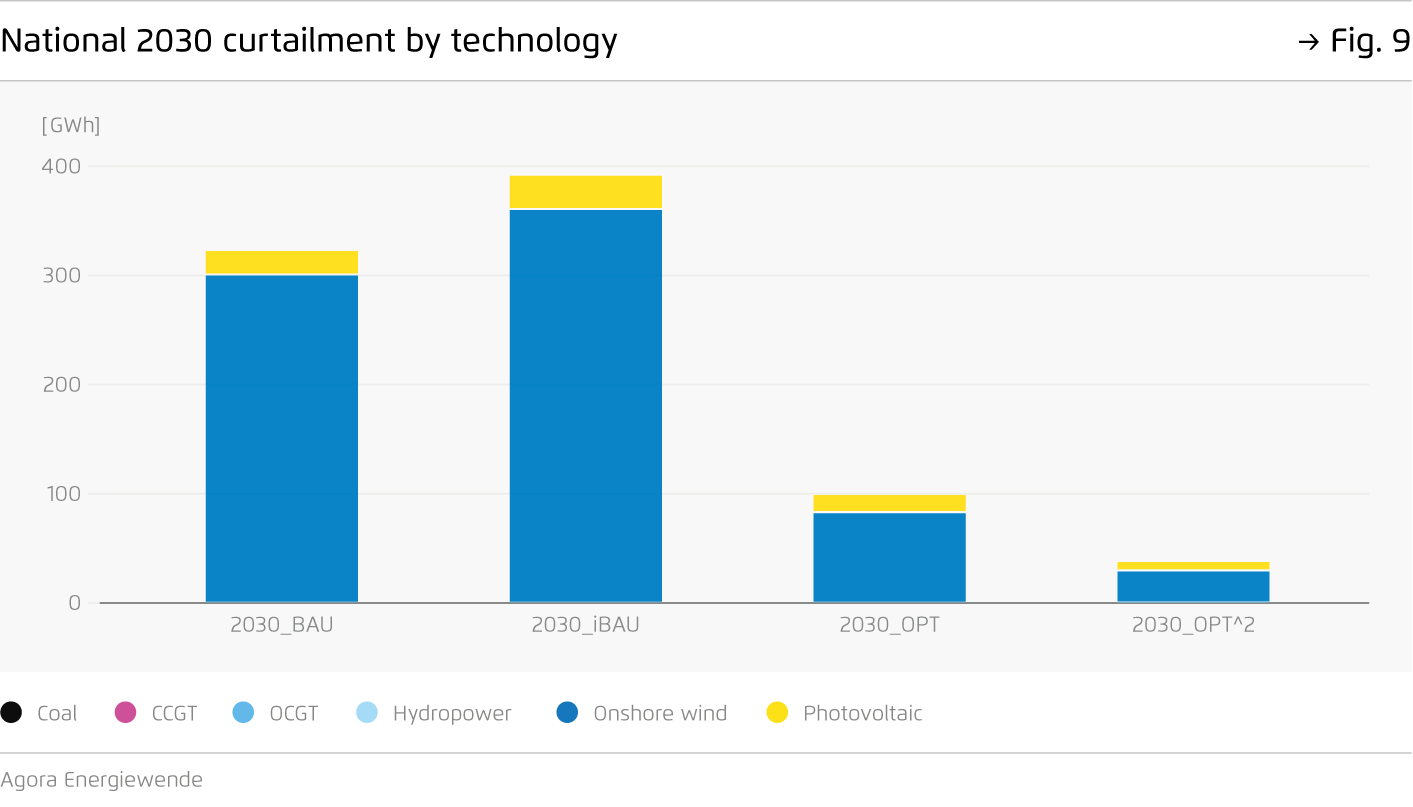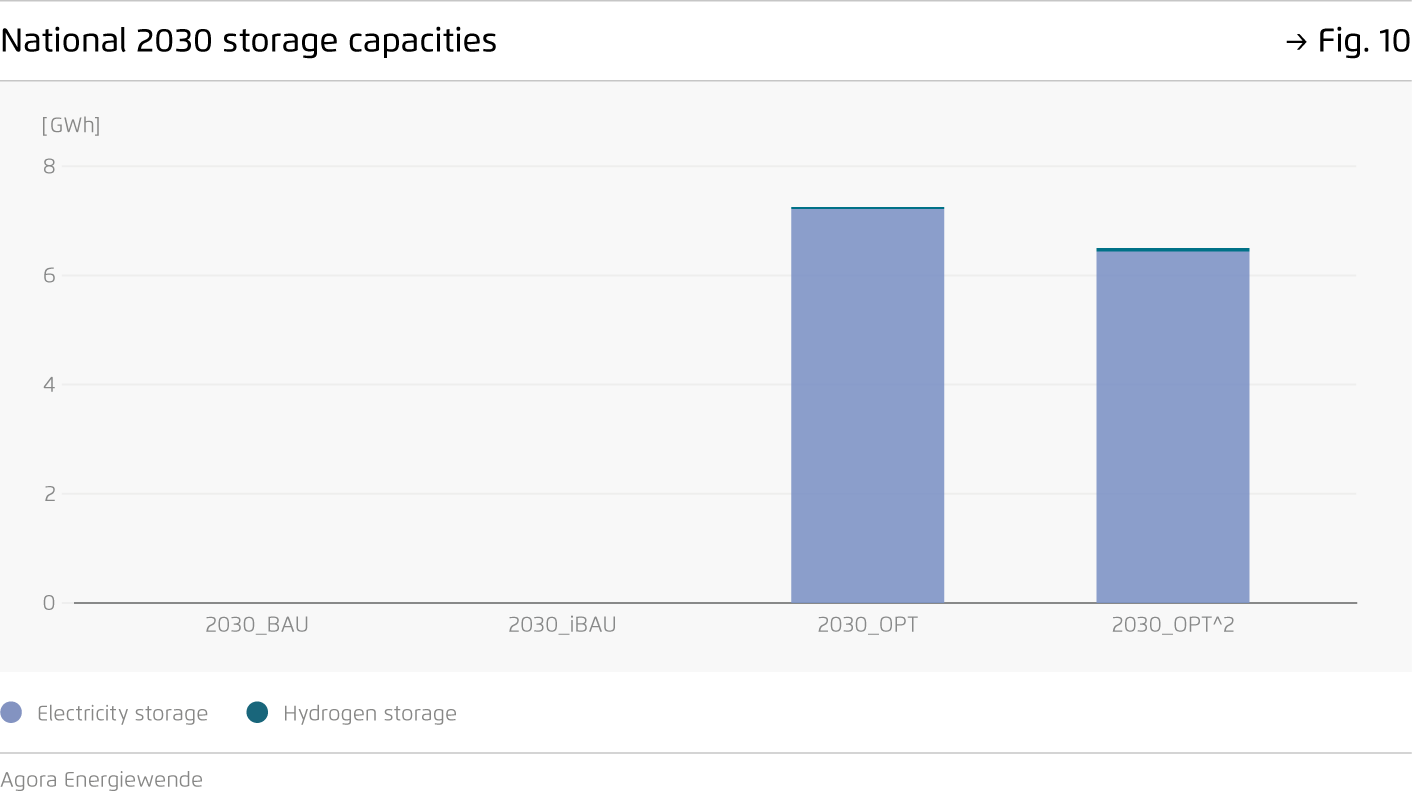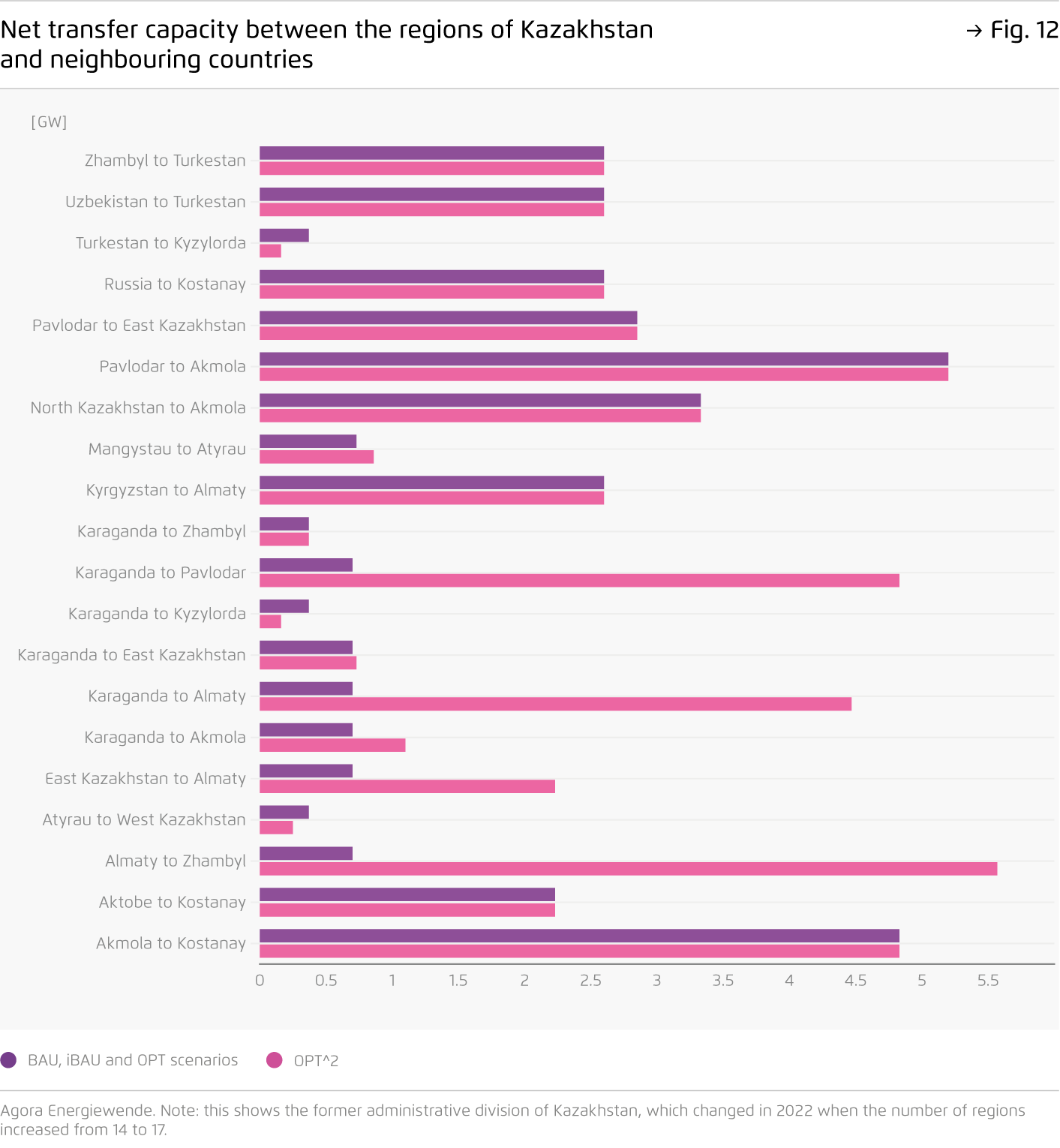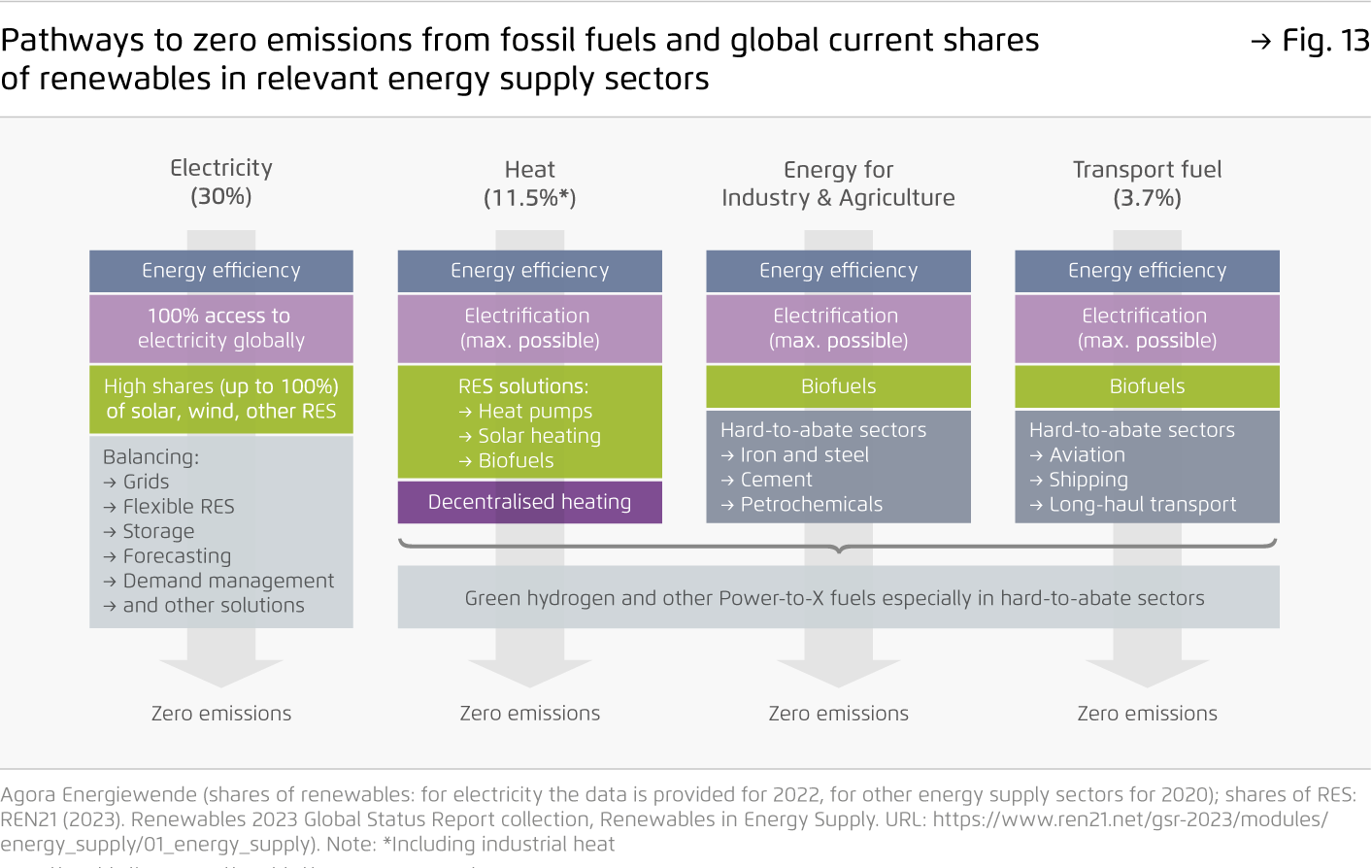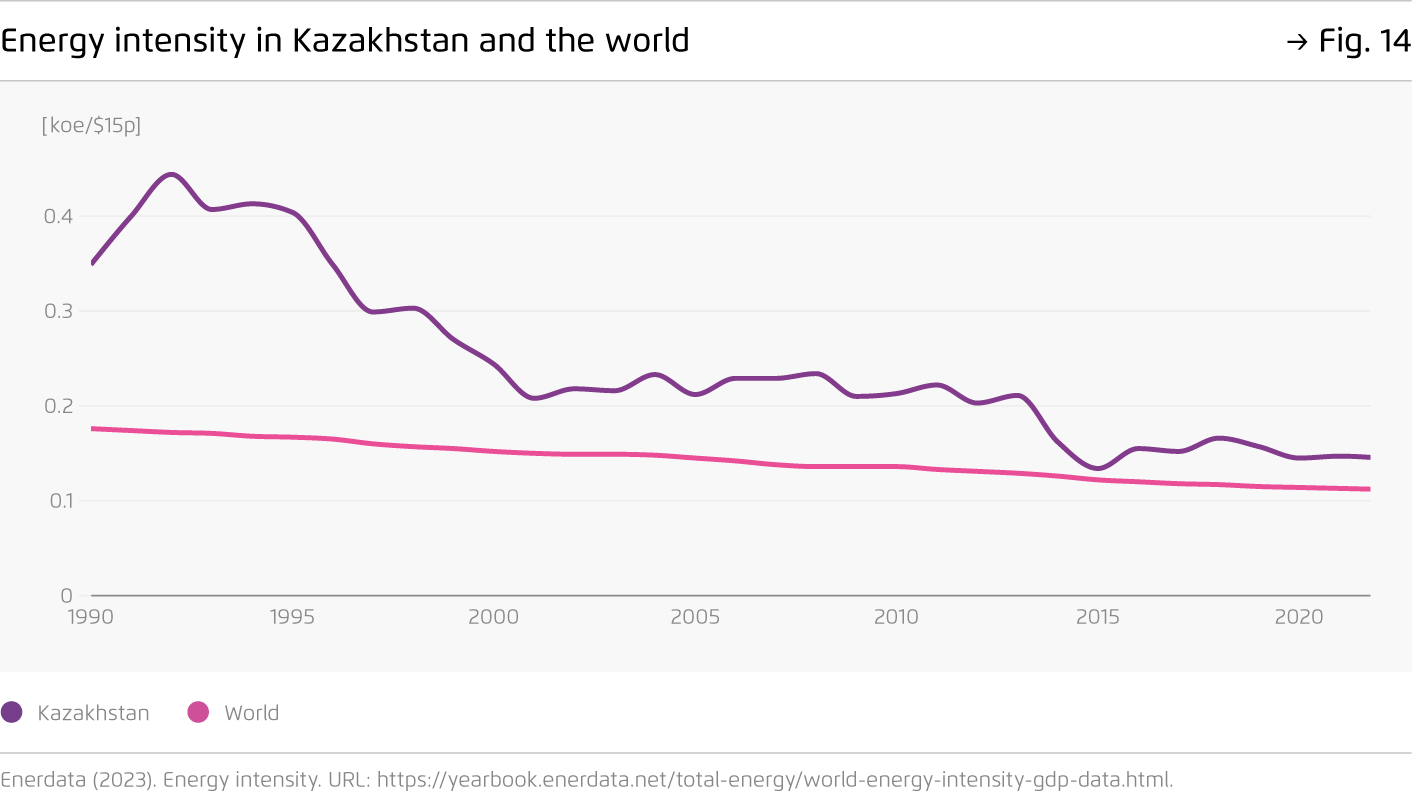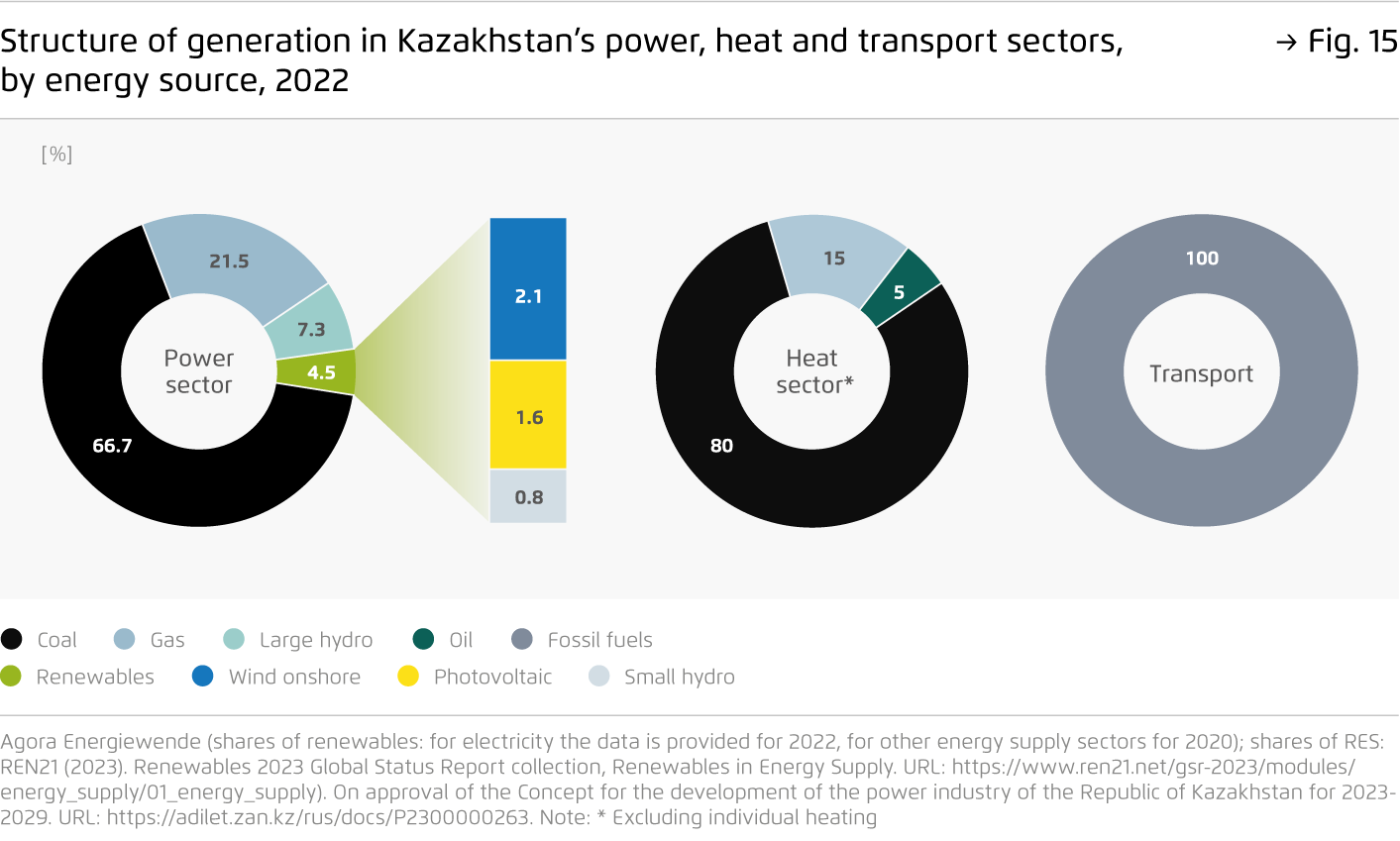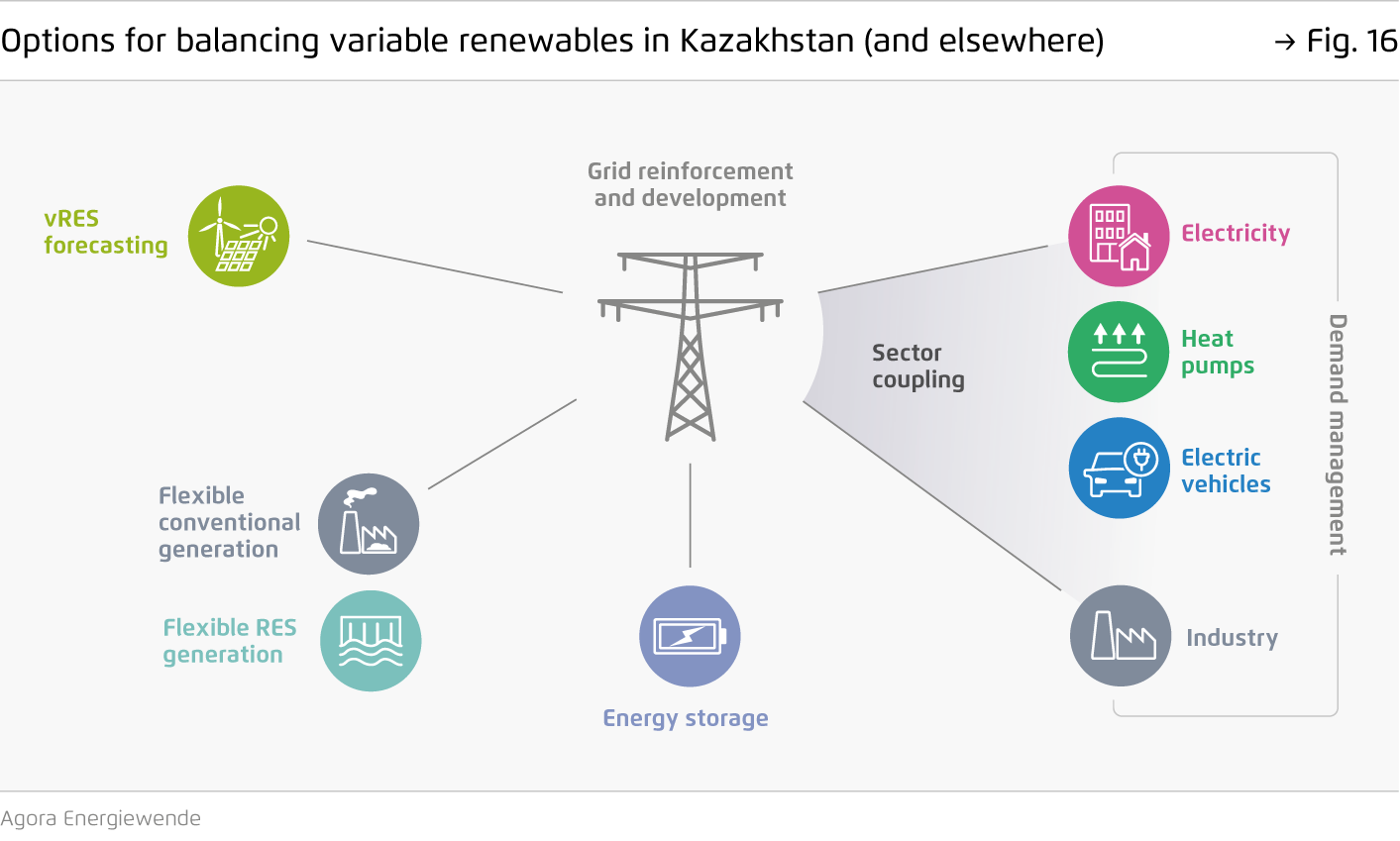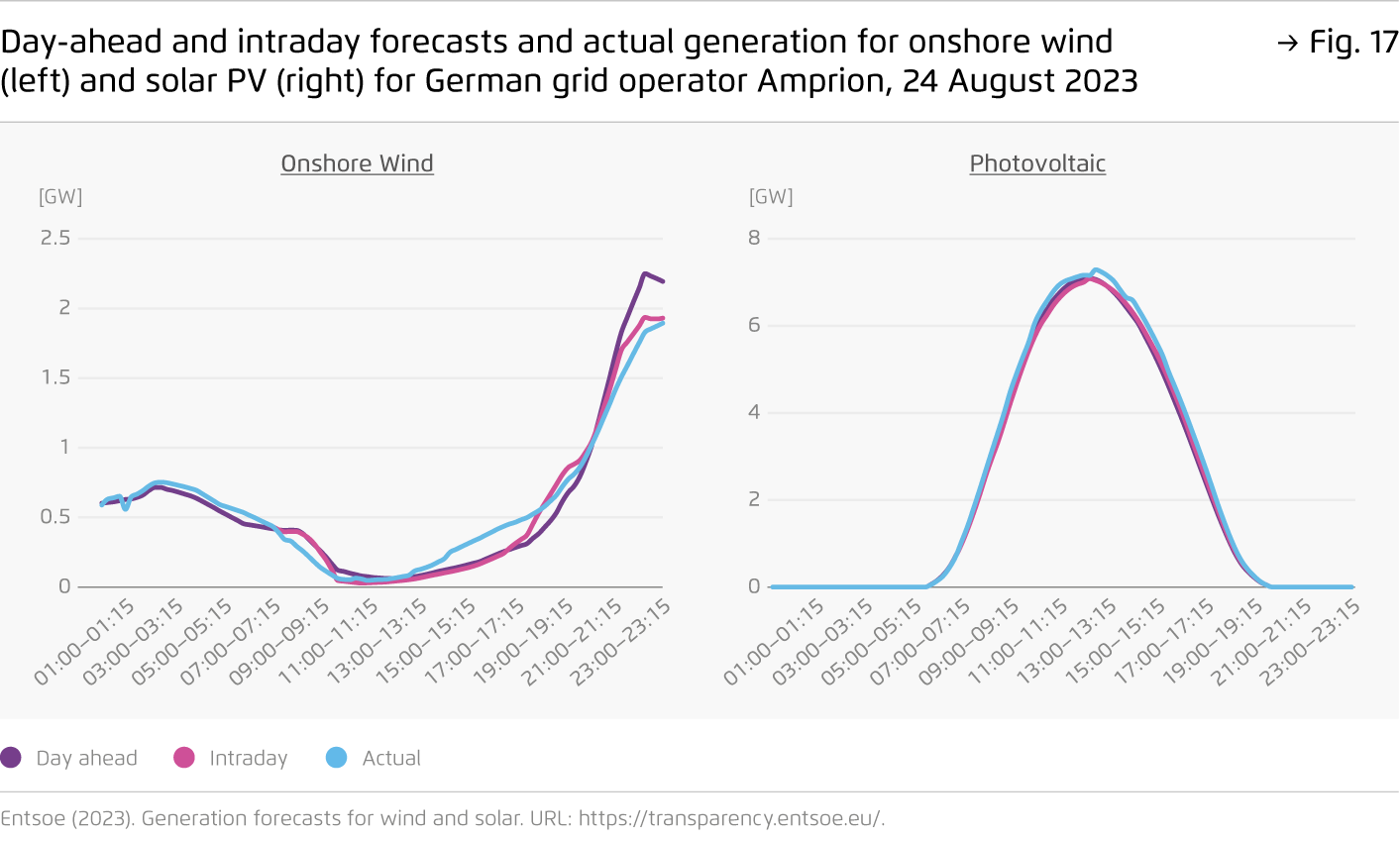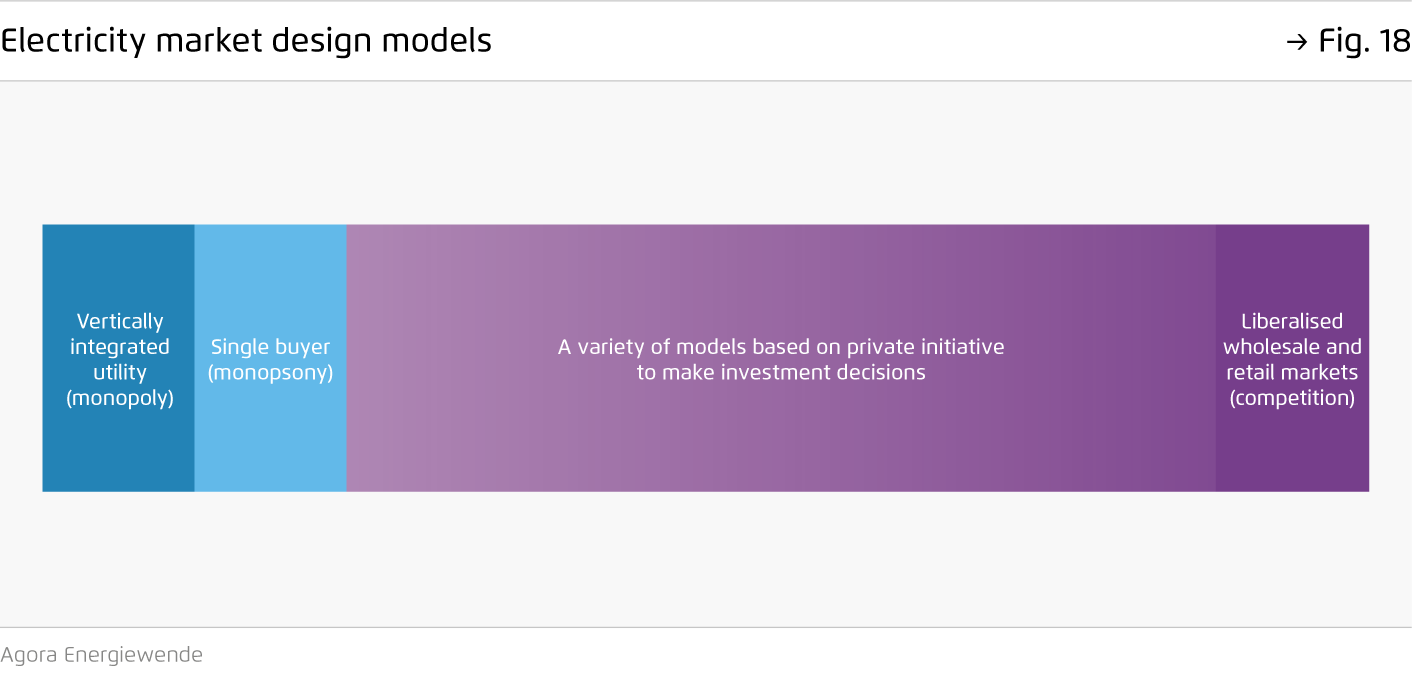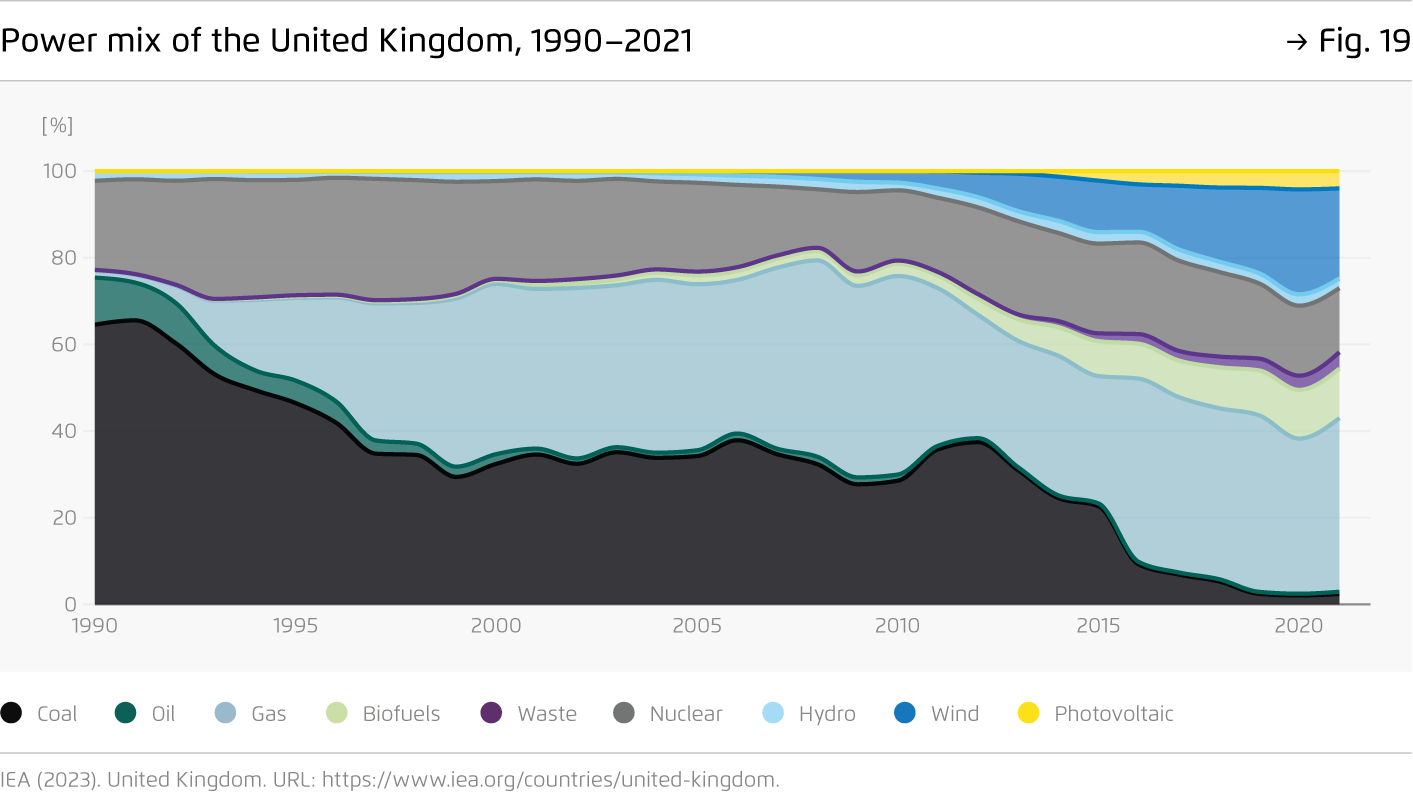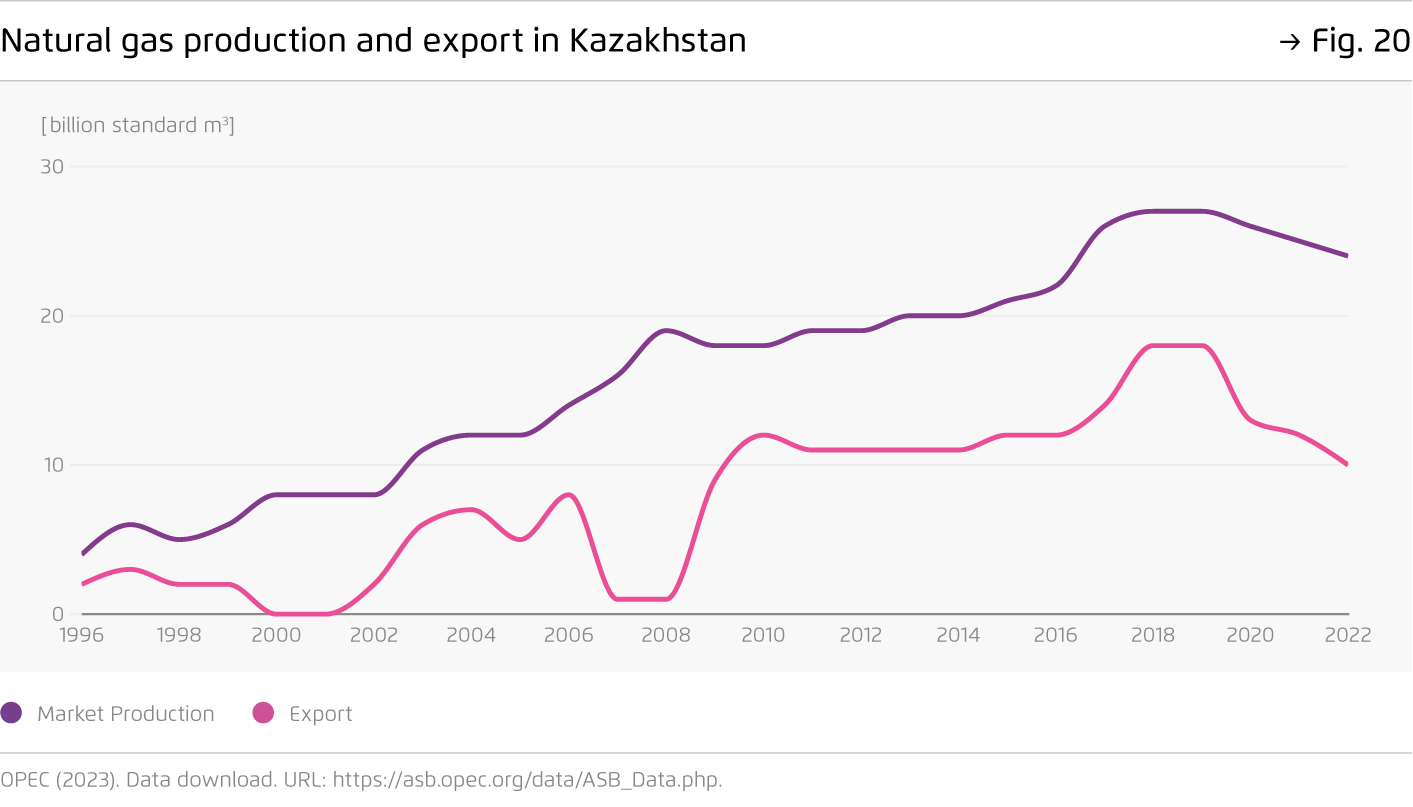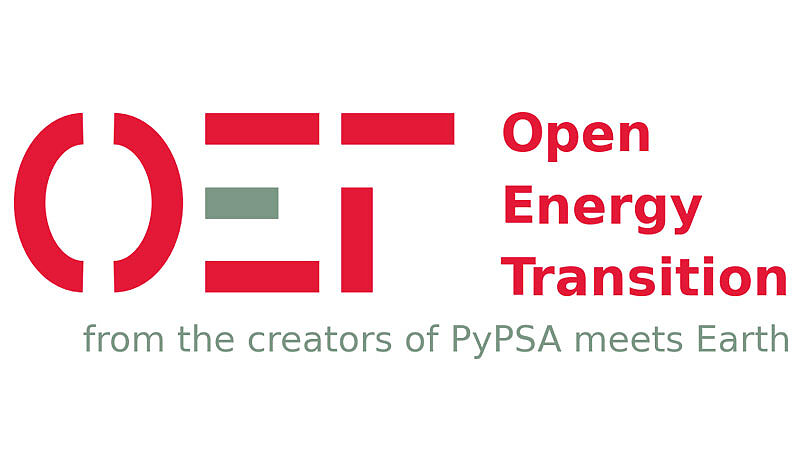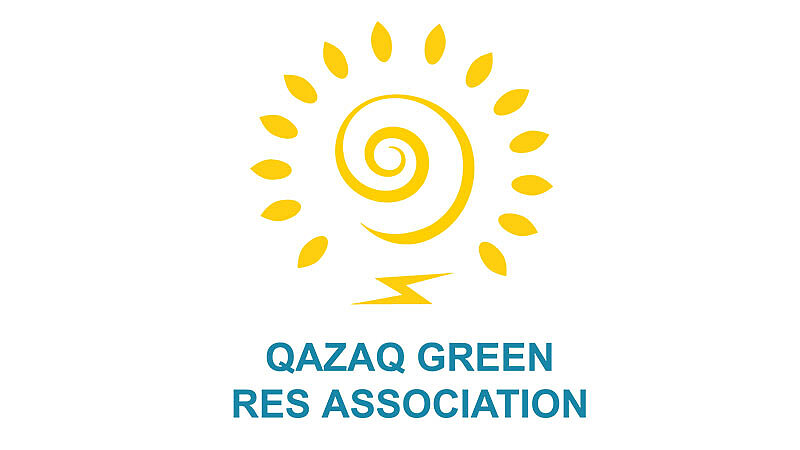-
Solar PV and wind will be the cheapest sources of power in Kazakhstan in 2030 for new generating facilities.
The 2030 levelised cost of energy (LCOE) from new build solar PV and wind power plants across all scenarios outlined in this report is estimated to be only about a half (47–62% less) of that from new build coal-fired generation.
-
Kazakhstan can minimise the overall costs of its power system while reducing the share of coal from the current level of 67% to 45% by 2030.
Such a scenario will enable the country to achieve the energy-related emissions cuts necessary to reach its 2030 emissions reduction target and will mark a major milestone on its path to carbon neutrality by 2060.
-
The acceleration of renewable energy deployment, grid reinforcement and extension, renewable hydrogen, energy storage and related technologies are key elements of a successful transformation of Kazakhstan‘s energy sector.
Some of the topics currently discussed in the country, such as a coal-to-gas transition and clean coal technologies, would divert investments from an efficient path to carbon neutrality.
-
The country urgently needs a long-term coal phase-out plan, as well as a more balanced and holistic approach to planning for the whole energy sector.
Such an approach should put the lowest cost technologies, i.e. wind and solar PV, at the centre of its transformation; and gradually couple the green power sector with heating/cooling and transport sectors.
Modernising Kazakhstan’s coal-dependent power sector through renewables
Challenges, solutions and scenarios up to 2030 and beyond

Preface
Kazakhstan, with its vast territory, holds immense potential for the development of cheap solar and wind energy. As of mid-2023, the country had a share of 5% variable renewable generation (vRES) in its power mix. The national objective is to elevate this proportion to 15% by 2030. Our research shows that significantly higher shares are realistic.
The aim of this study is to present pathways for achieving this share of 15% as well as even higher shares of vRES. Critically, the pathways presented in this paper minimize power system costs and ensure security of supply while phasing down carbon intensive coal-fired power generation. Transitioning away from coal is a particularly important contribution towards reaching Kazakhstan’s climate targets.
This study also underscores the significant opportunities and advantages for the wider energy sector and the whole economy associated with rapidly increasing the share of vRES. It also proposes solutions to multiple challenges that arise on the way, such as cost-effective grid integration of wind and solar PV, the necessary transformation of combined heat and power (CHP) systems, and the social implications of coal usage.
Key findings
Bibliographical data
Downloads
-
Study
pdf 3 MB
Modernising Kazakhstan’s coal-dependent power sector through renewables
Challenges, solutions and scenarios up to 2030 and beyond
-
Translation
pdf 3 MB
Модернизация зависимого от угля электроэнергетического сектора Казахстана за счет возобновляемых источников энергии.
Вызовы, решения и сценарии на период до 2030 года и далее.
All figures in this publication
Actual 2022 data and 2030 scenarios for Kazakhstan’s capacity mix
Figure 1 from Modernising Kazakhstan’s coal-dependent power sector through renewables on page 12
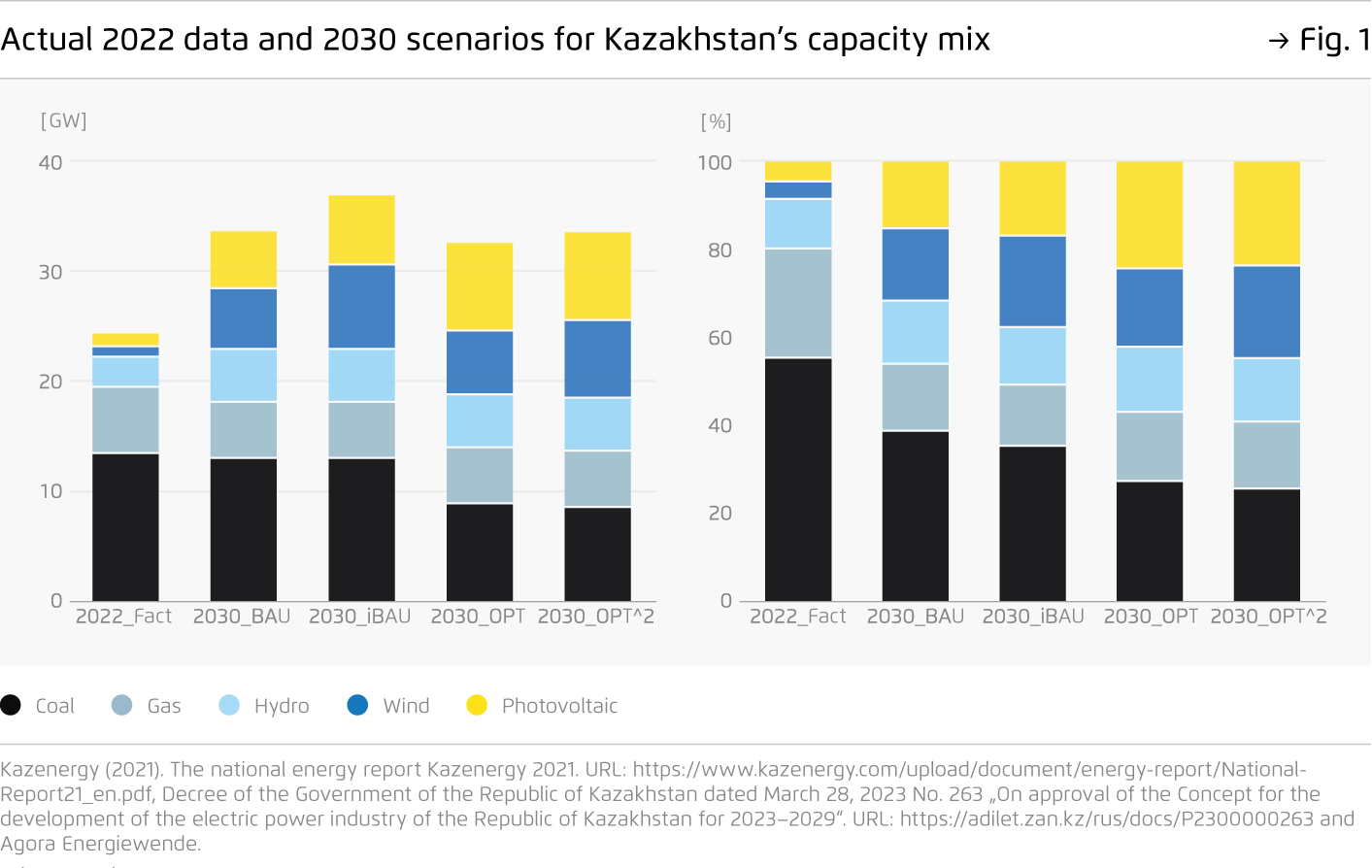
Actual 2022 data and 2030 scenarios for Kazakhstan’s power generation mix
Figure 2 from Modernising Kazakhstan’s coal-dependent power sector through renewables on page 13
